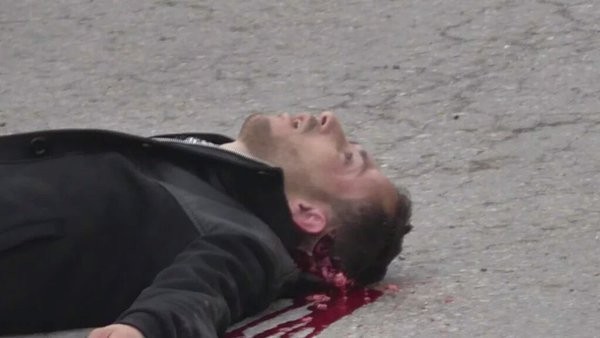Hebron shooter Elor Azaria is indeed the norm
by Amira Hass, Haaretz, 05 January 2017, republished by Tlaxcala. Over the past year and a half, dozens of Palestinian men, women and children have been killed, even though they could have been overpowered while they were still alive. The difference between them and Azaria is that he was videotaped.

Palestinians agree with Elor Azaria and his supporters: that he wasn’t the only
one, he just had the bad luck to be videotaped without his knowledge.
Palestinians agree with Azaria and his supporters that he was complying with
the norm and did exactly what other soldiers do – namely, shoot with intent to
kill even when nobody’s life is in danger.
that the system discriminated against him. It’s just that they believe dozens
of other soldiers and policemen should also have stood trial.
are wondering why he stood trial while the soldiers who killed Hadeel
al-Hashlamoun of Hebron were never even investigated by the Military Police.
She, too, was lying on the ground, after soldiers shot her from a distance at a
checkpoint because she held a knife (which no soldier was even scratched by).
And then, while she was lying there, they continued shooting her in the upper
body. (This was on September 22, 2015, and Hebron residents attribute the
subsequent outbreak of lone-wolf attacks to this incident.)
a Border Policeman, “confirmed the kill” of Ziad Jilani, who was already lying
on the ground, shot and wounded, after having run over other policemen with his
car in Jerusalem’s Wadi Joz neighborhood. The prosecution decided against
indicting Vinogradov, accepting his ridiculous claim that he feared Jilani had
a bomb. He was in the heart of a Palestinian neighborhood – why would he blow
himself up there?
lying on the ground, after having stabbed an Israel in Jerusalem’s Musrara
neighborhood on October 4, 2015. An anonymous policeman shot him to death after
passersby encouraged him to do so. In this case, there was video footage from a
cell phone, but it wasn’t enough for any steps to be taken against the killer.
knife on Border Policemen inside the security-inspection room of a Hebron
checkpoint on July 1, 2016. They sprayed her in the face with pepper spray and
fled the room. Then one of them shot her, while she was alone in the room and
didn’t endanger anyone.
crossed the checkpoint at Anabta, where pedestrian traffic is forbidden, on
foot. She had a knife in her belongings, but she didn’t endanger anyone. And
there was no reason why the four armed, trained soldiers who surrounded her
couldn’t have overpowered her without killing her.
dozens of Palestinian men, women and children have been killed, even though
according to both eyewitnesses and common sense, they could have been
overpowered while they were still alive. Some, it later turned out, hadn’t even
attempted to commit an attack. Dozens of soldiers, Border Policemen and
checkpoint guards are walking free among us after having killed Palestinians
who posed no danger to their lives. The defense establishment portrayed them as
having acted properly.

The boundary between self-defense and
nationalist vengeance has been completely blurred. This is the
atmosphere in which Azaria operated.
Therefore, the message sent by the military court judges stands out
for its rarity: Elor Azaria violated the rules of engagement, so he was
convicted. But the message the Israeli defense establishment sends to
its soldiers and policemen is equally loud and clear: “Take care that
you aren’t videotaped when you do the deed. We know how to downplay the
value of photographs taken by Palestinian security cameras and bury the
testimony of Palestinian eyewitnesses. But we still haven’t found the
solution to close-up, professional video footage.”


